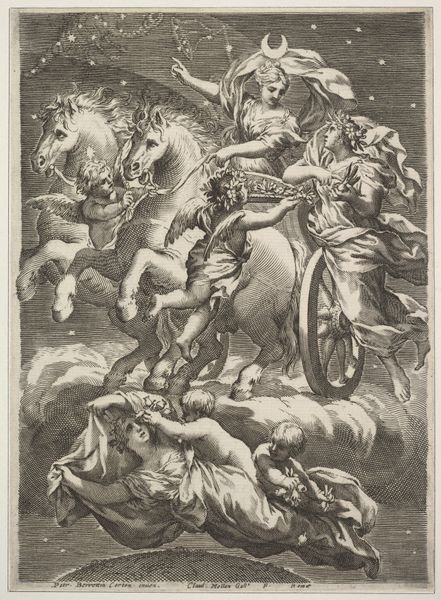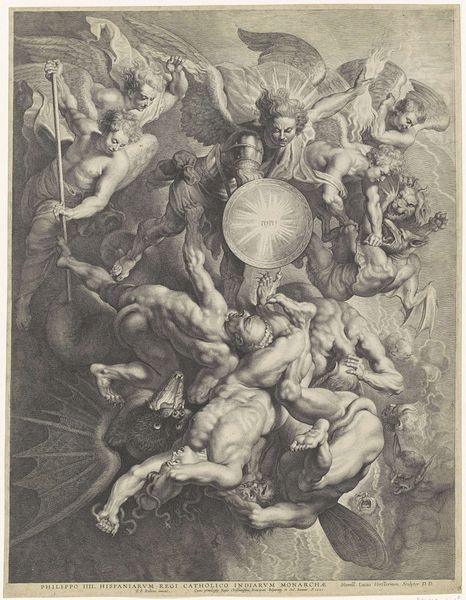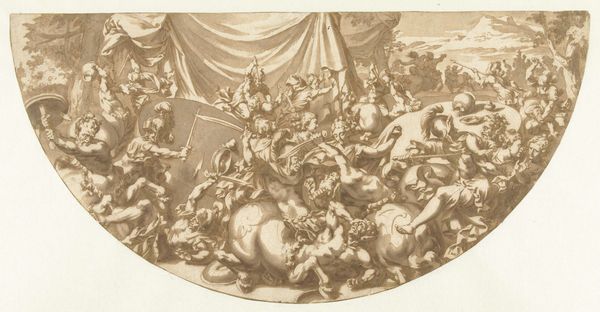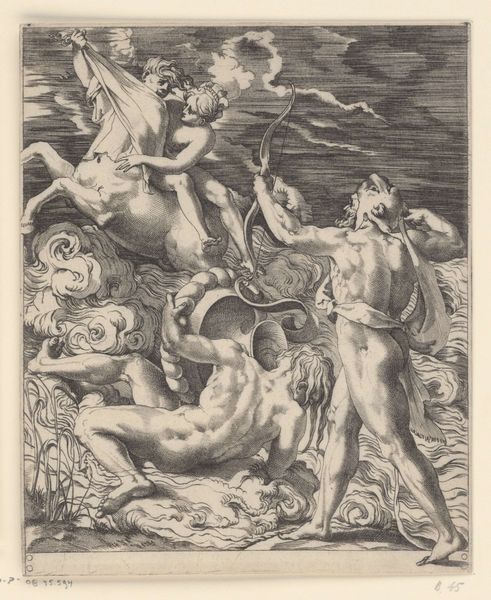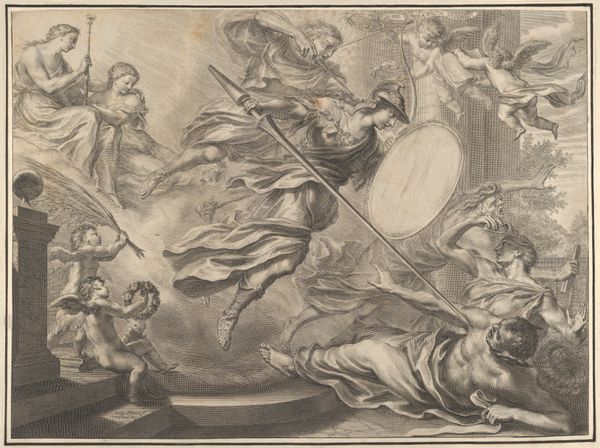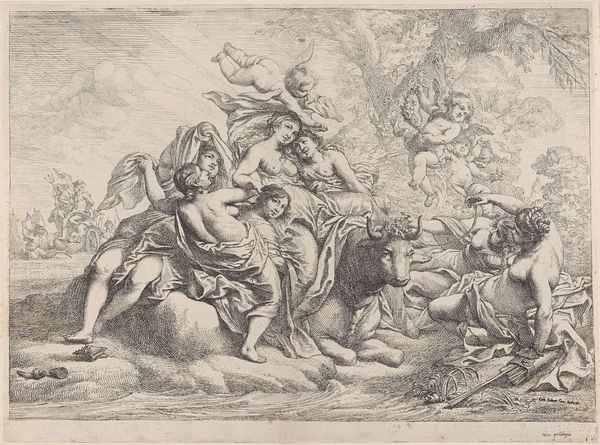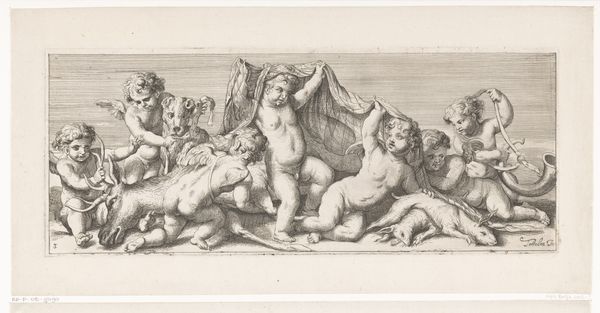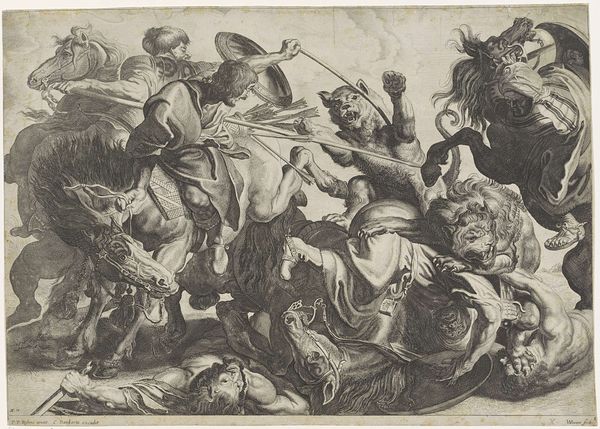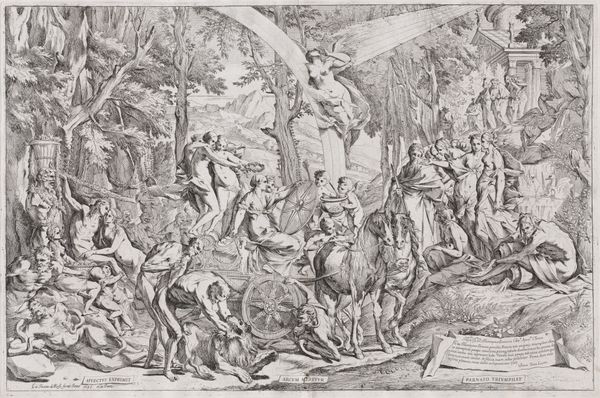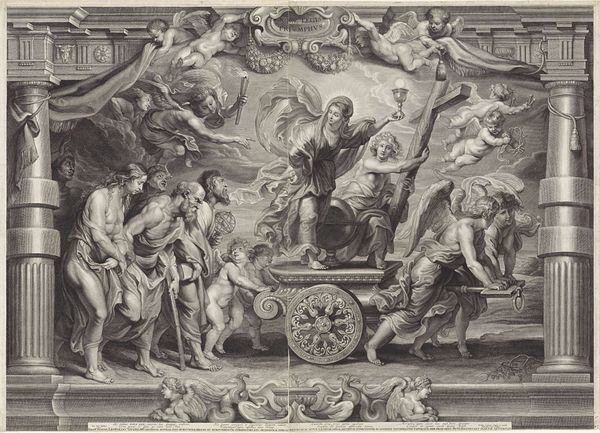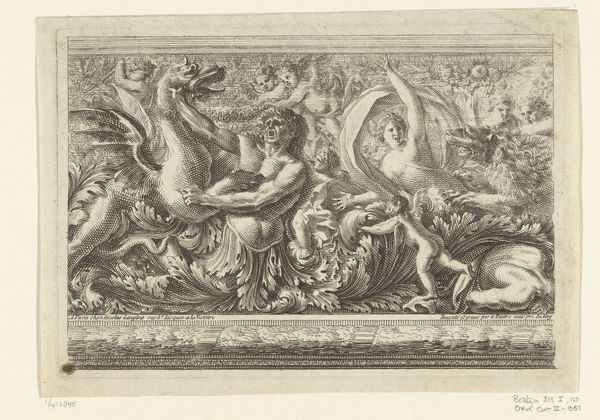
print, engraving
#
baroque
# print
#
old engraving style
#
figuration
#
history-painting
#
engraving
Dimensions: height 220 mm, width 328 mm
Copyright: Rijks Museum: Open Domain
Paulus Pontius created this engraving, "Camee met de triomf van Germanicus en Agrippina," in the 17th century. It reflects the visual culture of the period, where classical themes were often used to legitimize power and status. At first glance, this looks like a celebration of military victory. However, it is important to consider the role and representation of women in the artwork, especially Agrippina. Although she is present in the triumphal procession, her significance is somewhat ambiguous. Is she merely a symbol of the dynasty, or does she wield some form of influence? The presence of the centaurs, mythical creatures, adds another layer to the work. Typically symbols of untamed nature, here they draw the chariot, a potent reminder of the subjugation of the wild, and perhaps, of those deemed ‘other’ by the dominant culture. The defeated figures beneath the chariot also speak to the human cost of conquest, a theme that is present in much of the art of the period. This engraving invites us to consider the complex relationship between power, gender, and representation in the 17th century. It also makes us reflect on the legacies of military triumph, and how they continue to shape our world today.
Comments
No comments
Be the first to comment and join the conversation on the ultimate creative platform.

